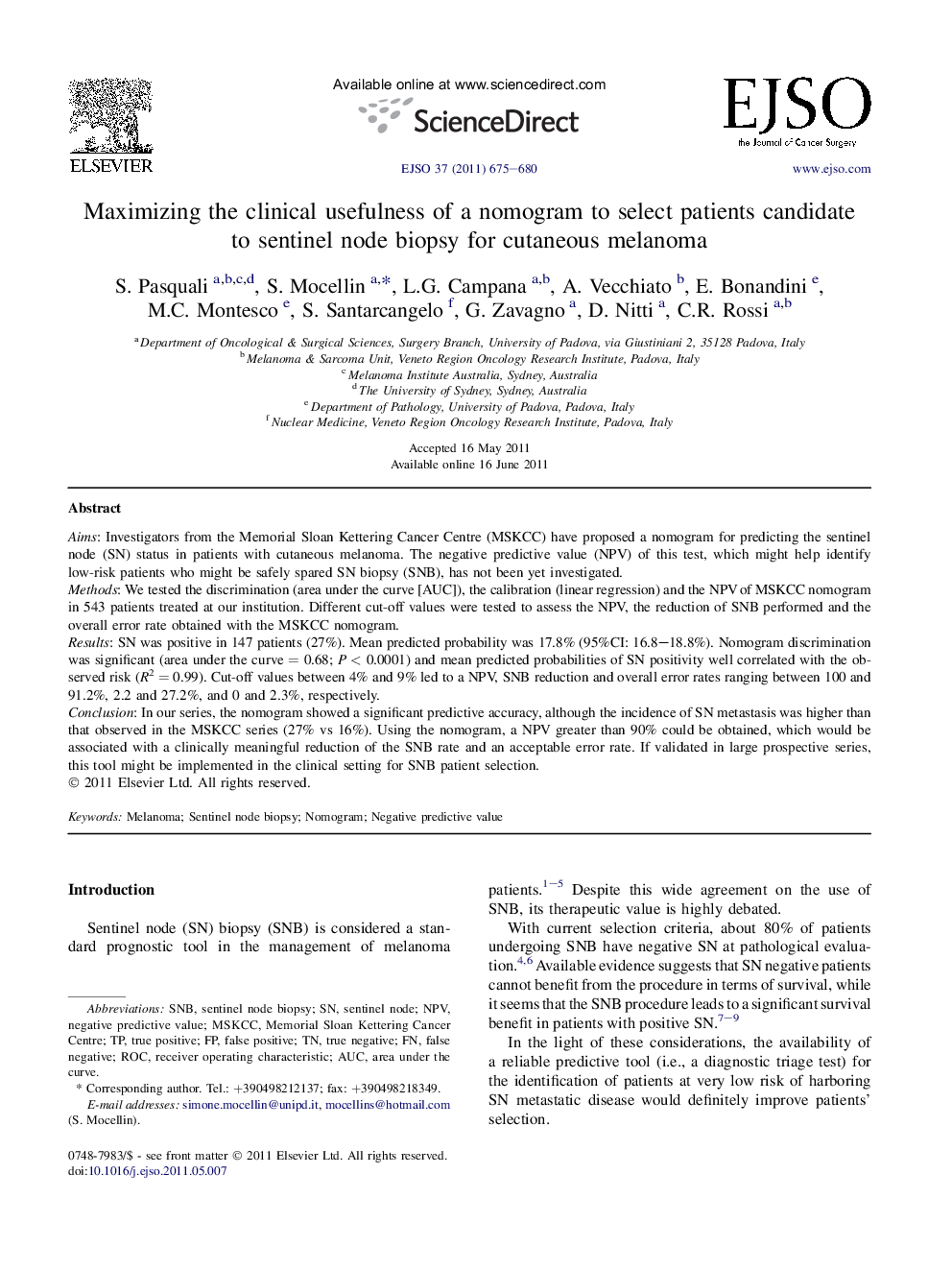| Article ID | Journal | Published Year | Pages | File Type |
|---|---|---|---|---|
| 3986879 | European Journal of Surgical Oncology (EJSO) | 2011 | 6 Pages |
AimsInvestigators from the Memorial Sloan Kettering Cancer Centre (MSKCC) have proposed a nomogram for predicting the sentinel node (SN) status in patients with cutaneous melanoma. The negative predictive value (NPV) of this test, which might help identify low-risk patients who might be safely spared SN biopsy (SNB), has not been yet investigated.MethodsWe tested the discrimination (area under the curve [AUC]), the calibration (linear regression) and the NPV of MSKCC nomogram in 543 patients treated at our institution. Different cut-off values were tested to assess the NPV, the reduction of SNB performed and the overall error rate obtained with the MSKCC nomogram.ResultsSN was positive in 147 patients (27%). Mean predicted probability was 17.8% (95%CI: 16.8–18.8%). Nomogram discrimination was significant (area under the curve = 0.68; P < 0.0001) and mean predicted probabilities of SN positivity well correlated with the observed risk (R2 = 0.99). Cut-off values between 4% and 9% led to a NPV, SNB reduction and overall error rates ranging between 100 and 91.2%, 2.2 and 27.2%, and 0 and 2.3%, respectively.ConclusionIn our series, the nomogram showed a significant predictive accuracy, although the incidence of SN metastasis was higher than that observed in the MSKCC series (27% vs 16%). Using the nomogram, a NPV greater than 90% could be obtained, which would be associated with a clinically meaningful reduction of the SNB rate and an acceptable error rate. If validated in large prospective series, this tool might be implemented in the clinical setting for SNB patient selection.
